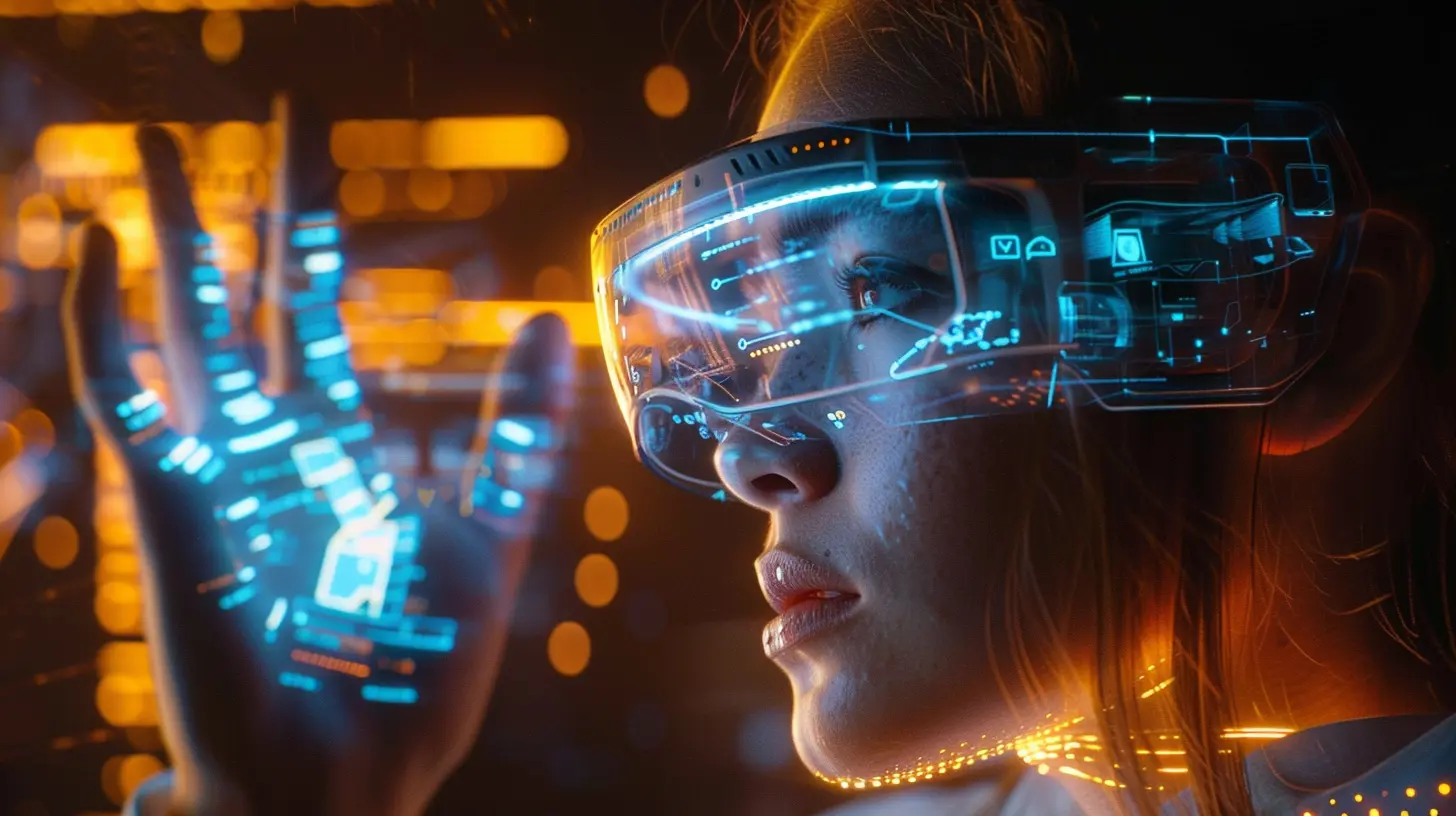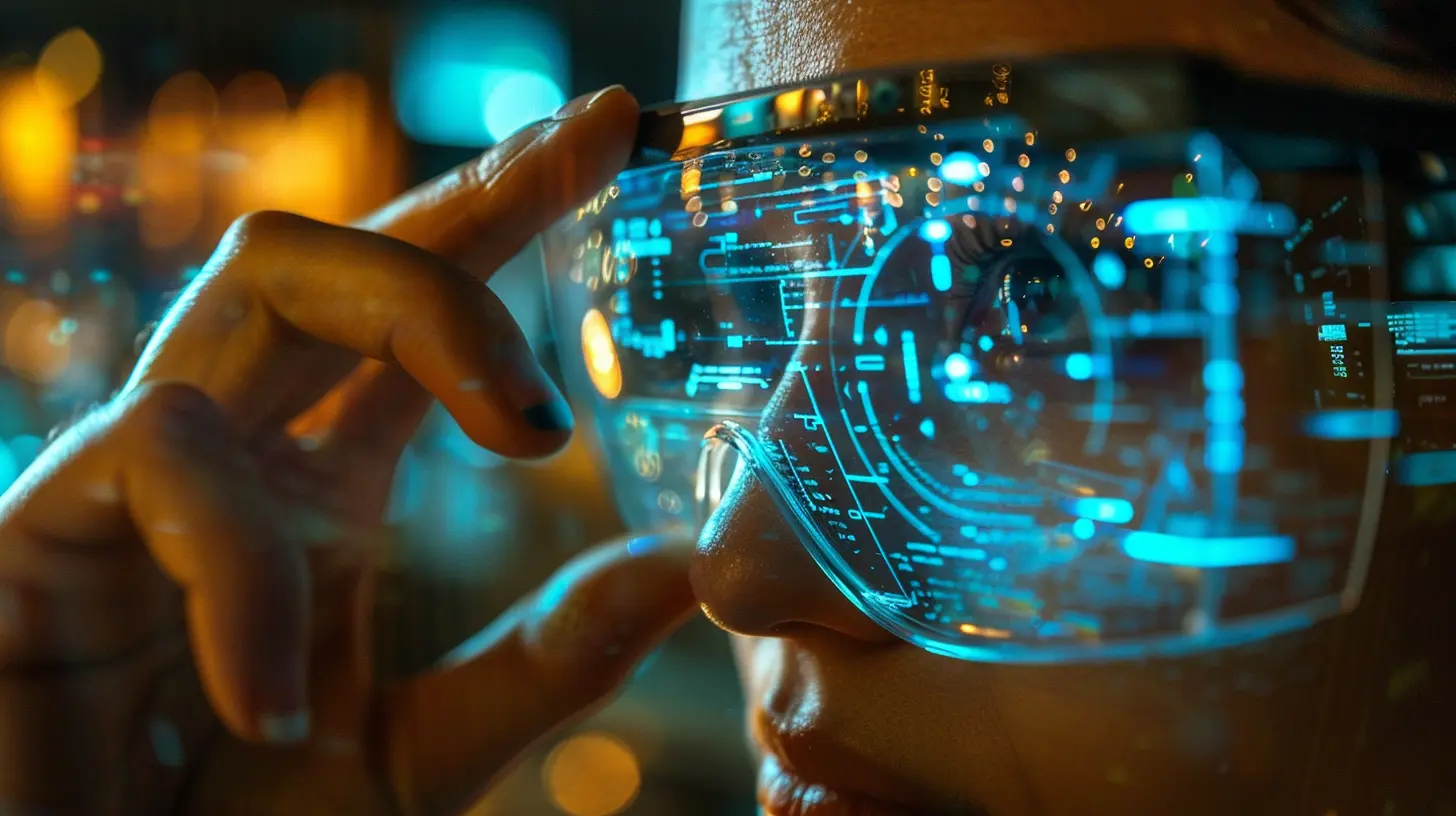The Future of Holographic Displays in Consumer Devices
29 July 2025
Holographic displays have long been the stuff of sci-fi dreams, but guess what? That future is closer than you might think. With rapid advancements in technology, holographic screens are no longer just a concept from Star Wars or Iron Man—they are knocking on the door of mainstream consumer electronics.
But what does this mean for devices we use daily? Will our smartphones, tablets, and even TVs embrace holographic displays soon? Buckle up because we're about to dive deep into the future of holographic displays in consumer devices. 
What Are Holographic Displays?
Before we get ahead of ourselves, let's break it down. Holographic displays create three-dimensional images that float in the air without needing special glasses. Unlike traditional 2D screens, these displays allow you to see depth, just like in real life.They work using various technologies, including:
- Light diffraction – bending light to create the illusion of depth
- Laser projection – using interference patterns to form 3D images
- Electro-holography – a more advanced method relying on digital holograms
This tech is already being used in niche fields such as medical imaging and military training. The big question is: when will it hit everyday gadgets? 
The Role of Holographic Displays in Consumer Devices
Holographic displays are set to revolutionize consumer electronics, offering a richer, more interactive experience. But where will we see them first?1. Holographic Smartphones
Imagine unlocking your phone, and instead of a flat screen, a floating 3D hologram appears. Insane, right? Big names like Samsung and Apple have already filed patents for holographic smartphones, proving that the industry is headed in this direction.Potential benefits include:
✔️ Better UI/UX – Interacting with a 3D interface is more intuitive.
✔️ Enhanced AR Capabilities – Augmented reality apps would become more immersive.
✔️ No More Screens? – A possibility where physical screens become obsolete.
Of course, challenges like battery consumption and processing power are barriers, but expect significant breakthroughs in the next 5-10 years.
2. Holographic TVs and Monitors
What if your TV didn’t need a screen? Companies are already working on holographic projectors that can display 3D visuals in mid-air.This could completely change how we consume entertainment:
✔️ Movies & Games in 3D Without Glasses – A full cinematic experience right in your living room.
✔️ Virtual Reality Without a Headset – No more bulky VR goggles.
✔️ Live Sports & Concerts – Imagine watching games where players appear in your space in full 3D.
Companies like Sony and LG are actively experimenting with this, meaning we could see prototype holographic TVs by the 2030s.
3. Holographic Laptops and Tablets
Business presentations, educational tools, and creative applications would skyrocket with holographic displays on laptops and tablets.✔️ 3D Design & Modeling – Architects and designers could manipulate objects just like real clay.
✔️ Immersive Learning – Students could interact with holographic human anatomy models or historical structures.
✔️ Better Remote Meetings – Virtual meetings could feel like face-to-face conversations.
With foldable phones becoming mainstream, it's only a matter of time before holographic tablets enter the scene.
4. Holographic Wearables & AR Glasses
Smart glasses are still in their early days, but holographic projections could supercharge them.✔️ Navigation & Real-Time Translators – No need to check your phone for directions.
✔️ Instant Information Overlay – Shopping in a store? Prices could display as floating holograms.
✔️ Holographic Smartwatches – Could replace traditional displays with floating UIs.
Apple, Google, and Meta are racing to make AR more seamless. Expect wearable holographic displays to hit mainstream adoption by 2035. 
Challenges in Bringing Holographic Displays to Consumers
While all this sounds like magic, several roadblocks still exist.1. Hardware Limitations
Holographic displays require high processing power and advanced optics, meaning making them affordable for consumers is tough. Current prototypes are expensive and bulky.2. Energy Consumption
Holographic displays demand more power, which could make battery life a nightmare for portable devices like phones and laptops. Researchers are working on low-power alternatives, but we're not there yet.3. Lack of Content
Imagine having a holographic TV but no 3D content to watch. The industry needs time to create and adapt content for these future screens.4. Manufacturing Costs
New tech is always expensive in the beginning. Companies need mass production breakthroughs to make holographic devices viable for the average consumer.
The Future: When Will Holographic Displays Become Common?
While we’re not quite there yet, the next decade will be incredibly exciting. Some key predictions:- 2025-2030 – Early-stage holographic phones and projectors enter the market.
- 2030-2035 – Holographic laptops, TVs, and AR glasses see wider adoption.
- Beyond 2035 – Fully-fledged holographic workspaces and hologram-based communication become a reality.
The demand is there, tech is progressing fast, and it's only a matter of “when” not “if.” Major players like Apple, Meta, Microsoft, and startups like Light Field Lab are in the race. Whoever cracks the holographic display code first will lead the next technological revolution.
Final Thoughts
The future of holographic displays in consumer devices is no longer just a fantasy. With companies pushing boundaries, we’re approaching an era where screens might become a thing of the past.From holographic smartphones to floating 3D TVs, what once seemed impossible is on the horizon. While challenges remain, innovative breakthroughs in optics, AI, and energy-efficient processing will soon make holograms a normal part of our daily devices.
The next time you watch a sci-fi movie featuring holographic tech, remember: That future is closer than you think.
all images in this post were generated using AI tools
Category:
Technology InnovationAuthor:

Pierre McCord
Discussion
rate this article
1 comments
Azurael McAleer
Holographic displays promise a captivating future, but let’s hope they don’t make our screens look even more two-dimensional.
August 11, 2025 at 4:47 AM

Pierre McCord
Thank you for your comment! Indeed, the goal is to enhance depth and immersion, making screens feel more dynamic rather than flat. Exciting advancements lie ahead!


